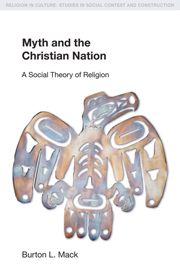Book contents
- Frontmatter
- Contents
- Dedication
- Preface
- Introduction
- Part I The Religions of Other Peoples
- Chapter 1 Looking for Religion in the New World
- Chapter 2 Noticing Social Interests in Myths and Rituals
- Chapter 3 Watching Myths in the Making
- Chapter 4 Thinking with Myths about Culture
- Part II The Religion of Christianity
- Conclusion
- Bibliography
- Index
Chapter 1 - Looking for Religion in the New World
from Part I - The Religions of Other Peoples
- Frontmatter
- Contents
- Dedication
- Preface
- Introduction
- Part I The Religions of Other Peoples
- Chapter 1 Looking for Religion in the New World
- Chapter 2 Noticing Social Interests in Myths and Rituals
- Chapter 3 Watching Myths in the Making
- Chapter 4 Thinking with Myths about Culture
- Part II The Religion of Christianity
- Conclusion
- Bibliography
- Index
Summary
When Columbus landed in 1492 on Guanahani, an island in the outer ring of the Bahamas which he christened San Salvador, the “Age of Discovery” began. The discoveries were of lands and their peoples that had not appeared on older maps of the world. Instead of the three familiar continents there was now a “new world” to challenge the tripartite conception. And instead of the older classification of the peoples of the three continents, derived from the three sons of Noah in Genesis 10, there was now another kind of people not mentioned in the Bible. As Columbus wrote in his log: “These people have no religious beliefs, nor are they idolaters. They are very gentle and do not know what evil is… They have no religion” (Diario, 143). They came to be called “Indians,” in keeping with the purpose of Columbus's voyage to reach the Spice Islands of India by sailing west instead of around the continent of Africa, but it was soon clear to others that he had reached lands and peoples very different from those he had hoped to find. That did not keep Columbus or the other explorers of the sixteenth and seventeenth centuries from claiming the lands for the kings and queens of Europe, or from treating the natives as subjects of their sovereigns.
- Type
- Chapter
- Information
- Myth and the Christian NationA Social Theory of Religion, pp. 16 - 47Publisher: Acumen PublishingPrint publication year: 2008



